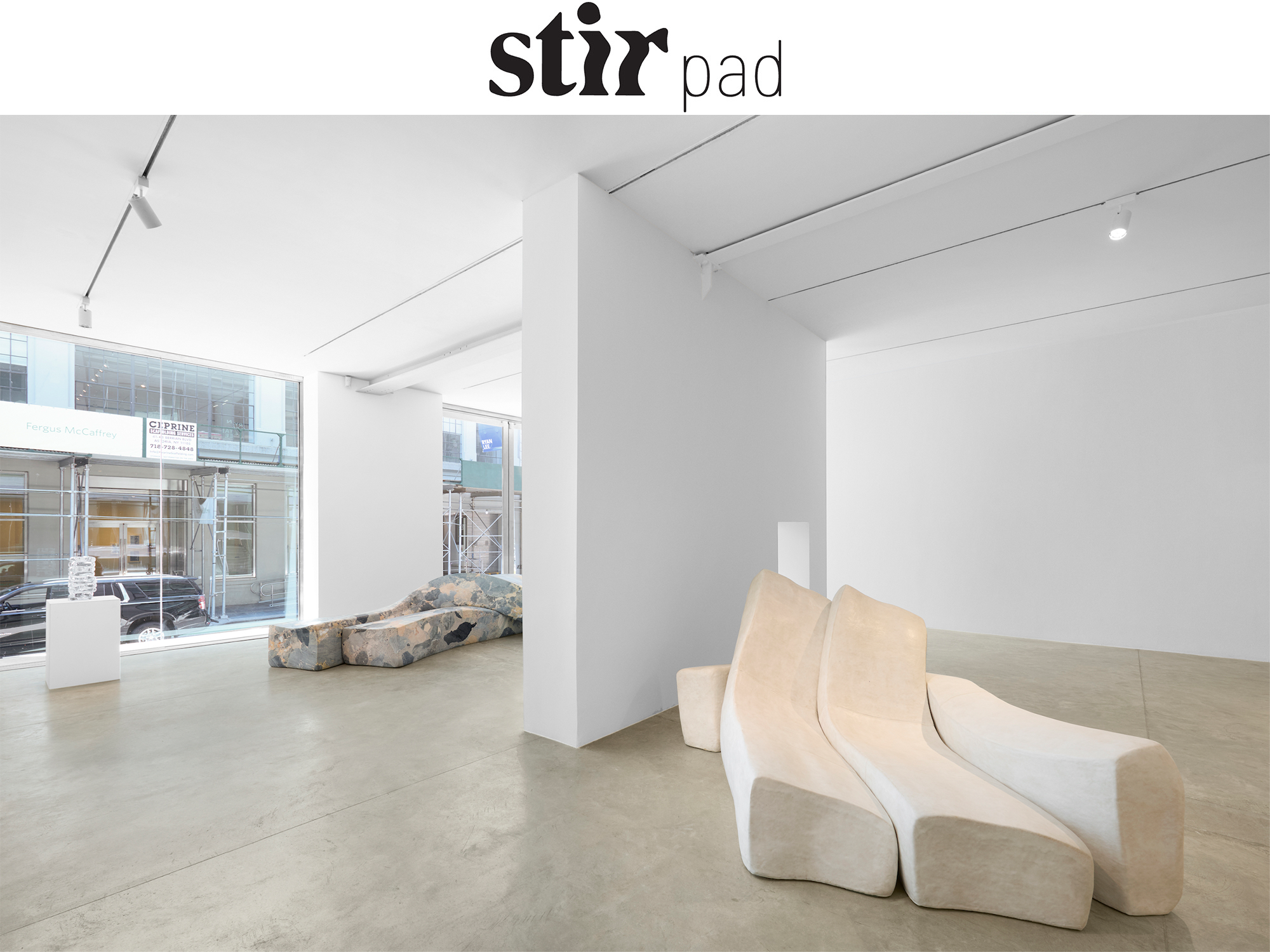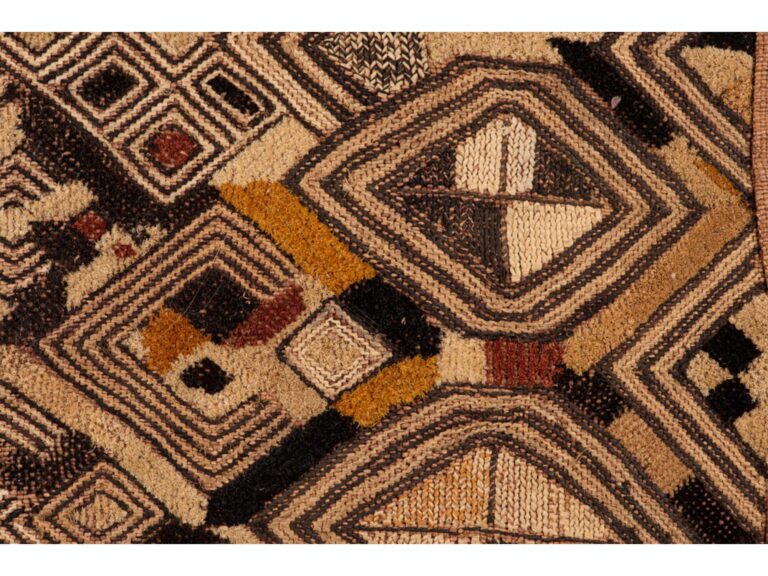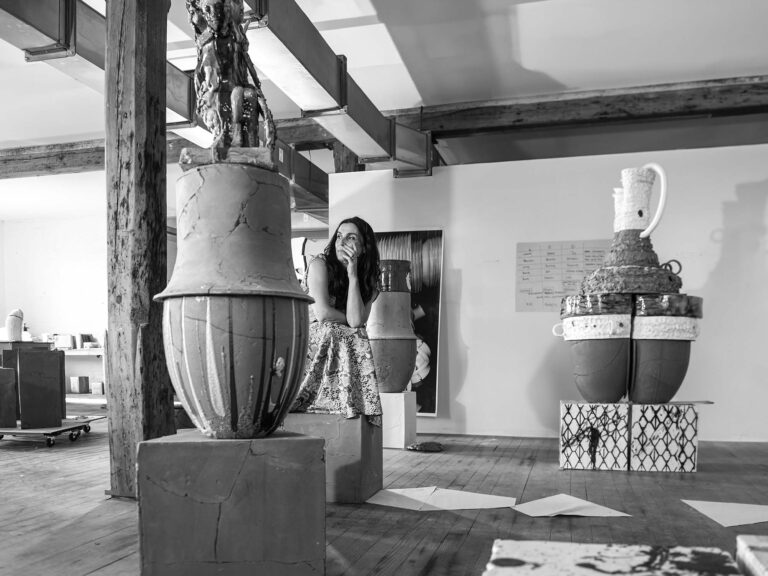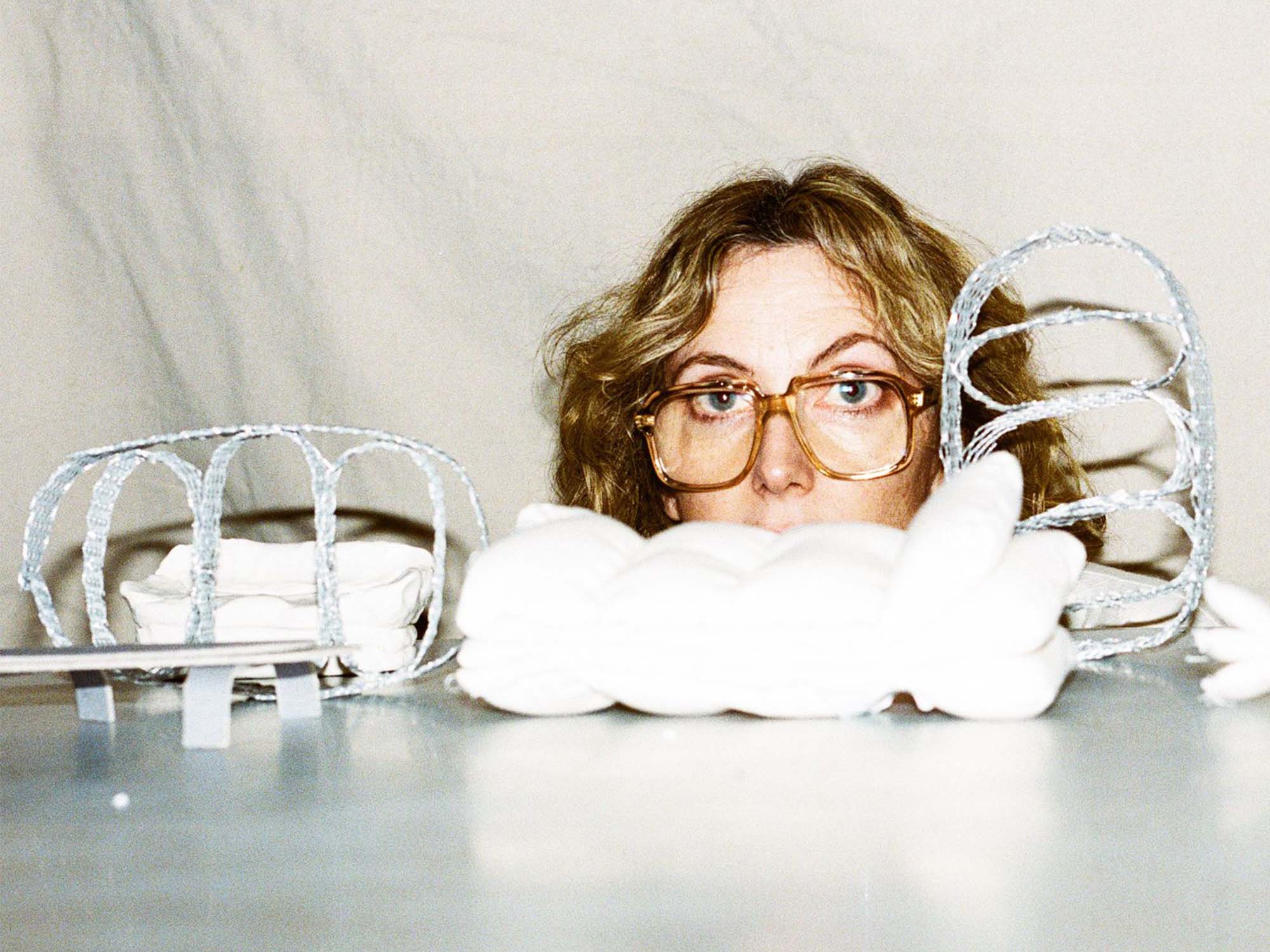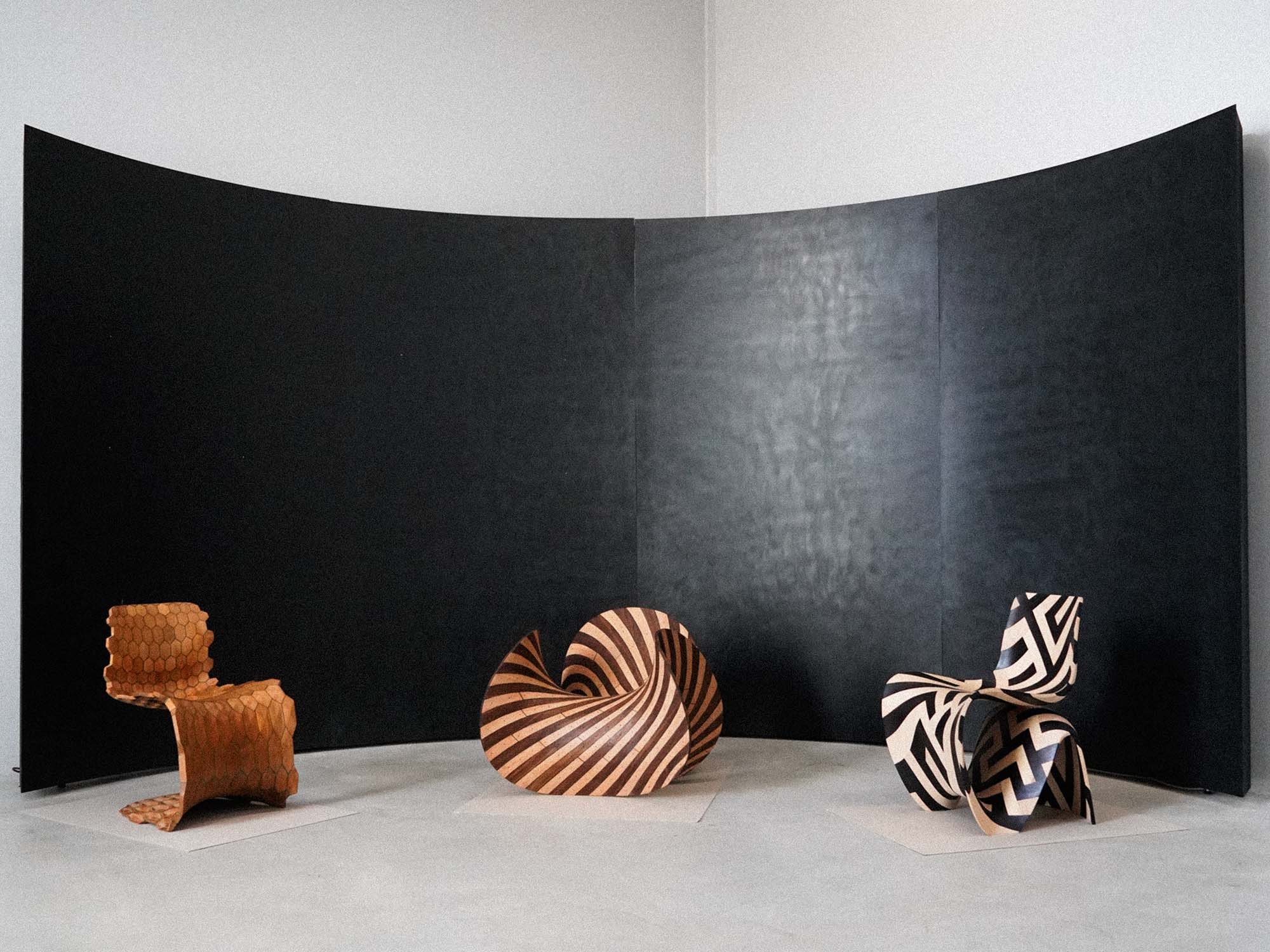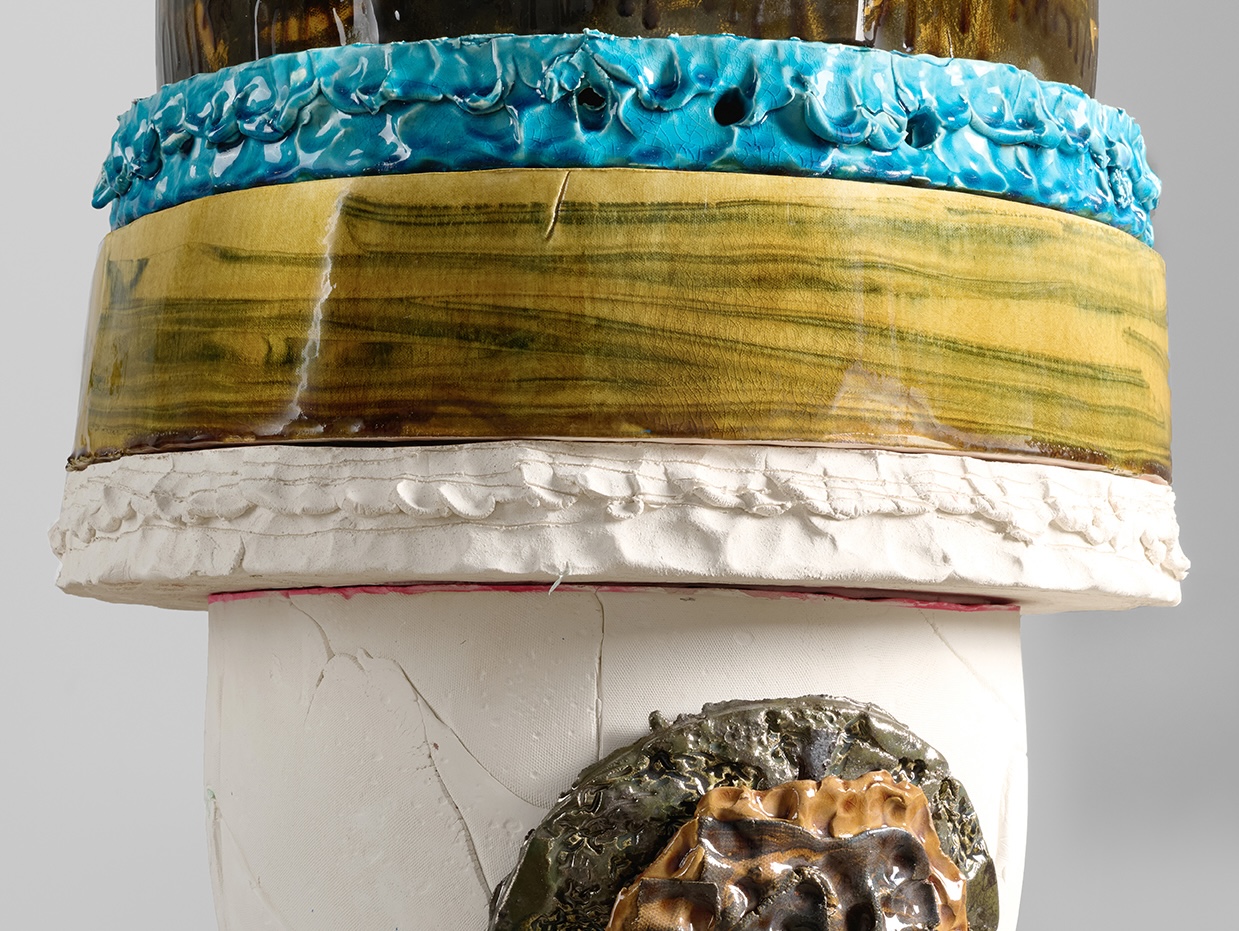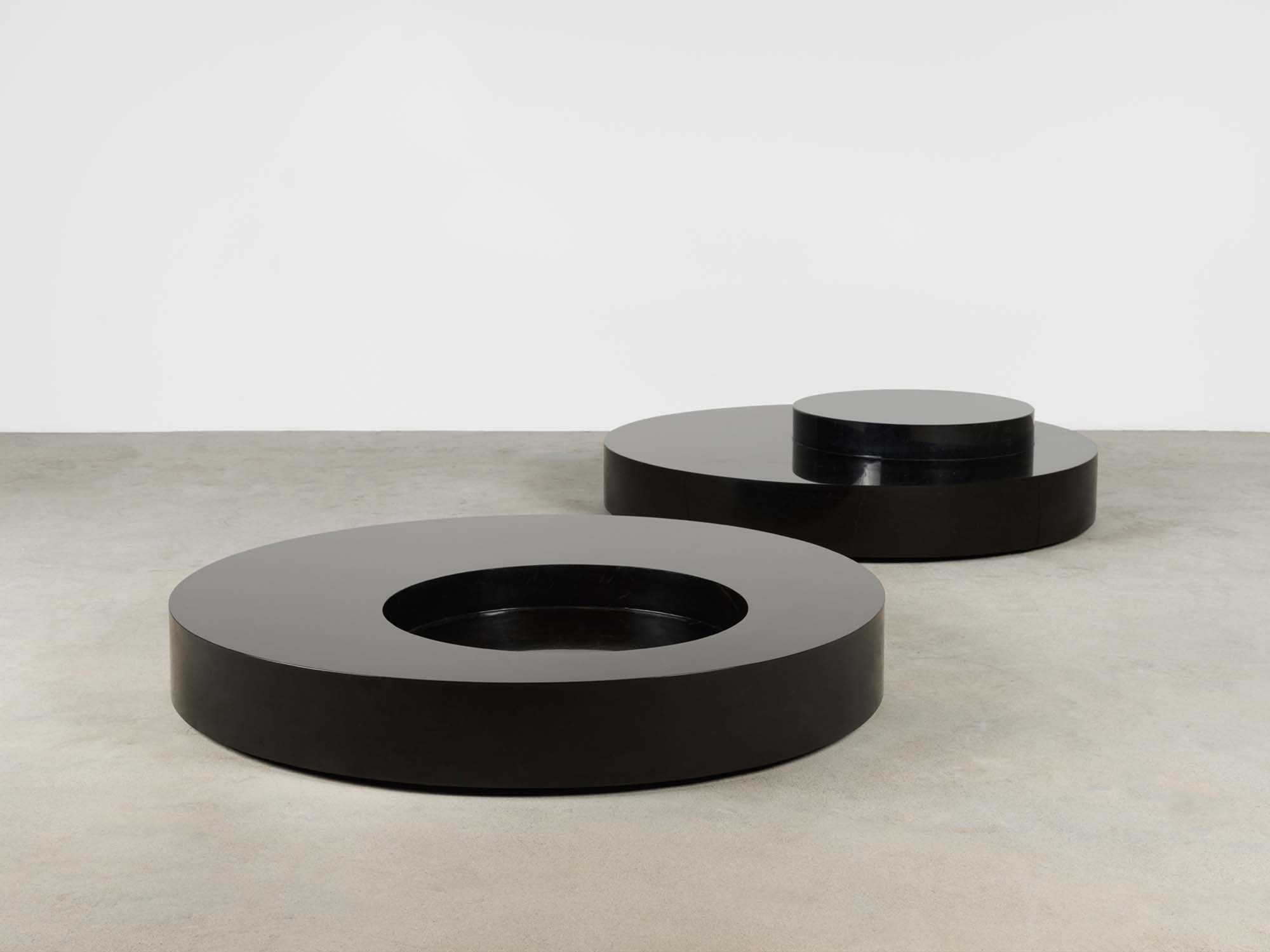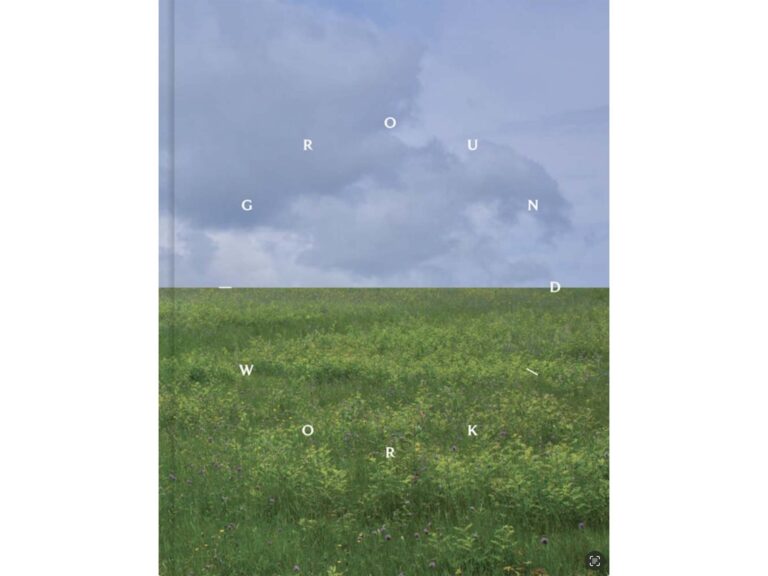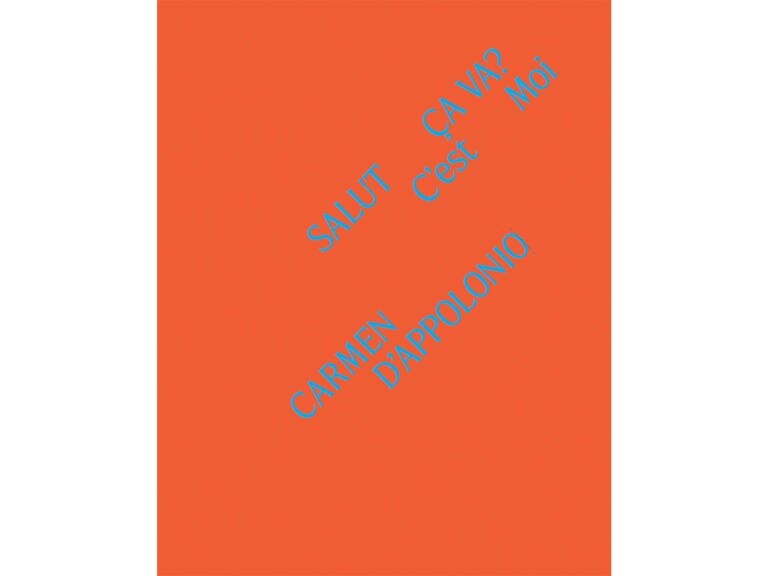by Mrinmayee Bhoot
The seemingly malleable sculptural artefacts by the designer form the display at Friedman Benda for her second solo exhibition, Opacity, Transparency, and Everything In Between.
Soft, pillowy forms in ceramic and stone and sumptuous, candy-like sculptures in glass define the juxtapositions and material slippages suggested by the title of Najla El Zein’s second solo exhibition with Friedman Benda, Opacity, Transparency, and Everything In Between. The illusively soft seats on display that only reveal their hardness when one touches them, are the signature of the Lebanese-French designer and artist’s growing body of work.
With the show on view at the New York gallery from June 27 – August 9, 2024, the Amsterdam-based designer ‘reflects on one’s initial perceptions, misunderstandings, and the necessity to decipher the layers beneath, as truth often lies between the lines.’ This condition of liminality and looking beyond the illusive surfaces is highlighted by the exhibited sculptural designs, which, due to their forms, seem like they are constantly being shaped, adding to their allure.
The exhibition space presents 15 glass sculptures along with three seatings crafted from ceramic and stone. While the designer describes her work as an exploration of the immaterial intricacies of life, the oozing, malleable and seemingly light forms also speak to her intimate understanding of materiality and craftsmanship.
El Zein explains her process of working with different materials in an interview with STIR: “I think these materials have become what they were always meant to be. When you consider stone and how it was formed over time, it all began with movement through water and fire. I believe stone is a living material, generous and fluid. Clay, too, has this essence. When comparing works in both materials, despite the similar language in the works, they convey completely different expressions. Stone offers generosity through its textures and veins, while clay, with its glaze, appears to be in constant movement, almost as if it would remain malleable to the touch.”
Eschewing traditional boundaries, and breaking down the perception of hardness through her work, her artefacts are informed by the materials as much as they transform them. She elaborates on this tension between materiality and expression in her creative process, wherein each material informs the work differently. “Stone is shaped through reduction, clay through accumulation, and glass through transformation. I always start with an intention, usually beginning with shaping my models in a very spontaneous way. The expression of each model guides me into choosing the right materials,” she notes.
The ongoing design exhibition also presents her recent exploration of glass art. She elaborates on working with the volatile material, “I needed to understand how glass reacts and forms to create models that would embody my original idea and intention for these pieces…Glass captures the present moment, embodying the space between its transformation from liquid to solid, reflecting the synergy of the glassblowers, the fluidity of our movements to compose it and sometimes, the tension.”
Ethereal glass sculptures line the walls of the show while the plush stone seatings, Lovers bench (2023) and Group of five (2024), as well as the ceramic artwork Family of three (2024), occupy the gallery floor, almost inviting visitors to sit on their smooth forms. Speaking about the glass artefacts, she states, “The glass series was named Ensemble referring to the musical connotation. Each piece tells a different story and I think that is beautiful.” Seemingly in constant motion, this musical quality is also something she highlights when speaking about working with glass, noting that the process feels like composing melodies, with each element waiting to be brought to life through the craft of the glassblowers.
Exploring different techniques and a process that prioritises thinking with the matter, the Beirut-born artist notes that the show’s title was something she thought of before she started working on the pieces on display. In this, El Zein reveals the questions she explores in her ongoing artistic practice, one which is guided by intuition, and draws inspiration from her experiences. “I use my work and the creative process as a way to dissect my feelings and moments I have experienced or thought about, as well as situations I find myself in or observe,” she states. It’s a quest to find the inherent meaning in the material and the narratives each embodies.
Between art and design, function and aesthetic, the subliminal bodies of El Zein’s work elicit feelings of warmth through their embracing forms, becoming more than just functional objects. “I want my works to be used and experienced, creating a cohesive relationship between material, space, and object. I believe design encompasses many layers of exploration. My approach to design and function is driven by expression, use, materiality and the hope of fostering deeper conversations and reflections,” she tells STIR. The seating in particular, twisting, embracing and folding is illustrative of this idea. Between materiality and expression, El Zein’s work brings to life an inherent need for connection and an emotion akin to listening to a passionately conducted orchestra.
